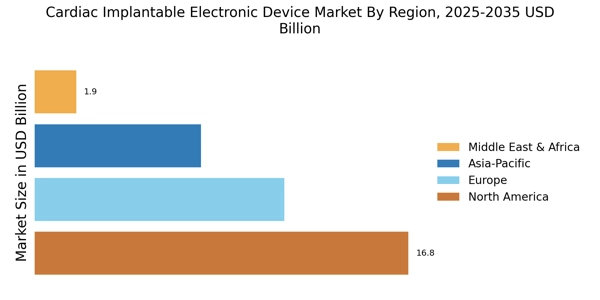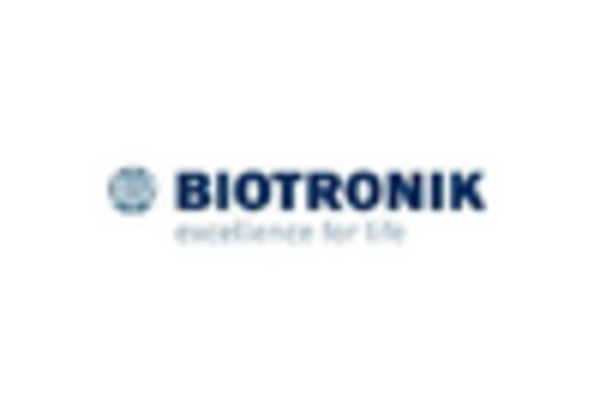Rising Healthcare Expenditure
An increase in healthcare expenditure across various regions is driving the Cardiac Implantable Electronic Device Market. Governments and private sectors are investing more in healthcare infrastructure, which includes the procurement of advanced medical devices. For instance, data indicates that healthcare spending in several countries has risen significantly, with a focus on improving cardiac care. This trend is expected to continue, as stakeholders recognize the importance of investing in preventive and therapeutic measures for cardiovascular diseases. As a result, the demand for cardiac implantable devices is likely to grow, supported by enhanced funding and resources allocated to cardiac health initiatives.
Growing Awareness and Education
The growing awareness and education regarding cardiac health are pivotal in shaping the Cardiac Implantable Electronic Device Market. Public health campaigns and educational programs are increasingly informing individuals about the risks associated with cardiac diseases and the available treatment options. This heightened awareness is leading to earlier diagnosis and treatment, which in turn drives the demand for cardiac implantable devices. Moreover, healthcare professionals are becoming more adept at recognizing the need for these devices, further contributing to market growth. As awareness continues to expand, it is anticipated that more patients will seek out these life-saving technologies, thereby bolstering the market.
Aging Population and Demographic Shifts
The aging population and demographic shifts are crucial factors influencing the Cardiac Implantable Electronic Device Market. As life expectancy increases, the prevalence of age-related cardiac conditions is also rising. Older adults are more susceptible to heart diseases, necessitating the use of implantable devices for effective management. Data suggests that by 2050, the proportion of the global population aged 60 and above will double, leading to a higher demand for cardiac care solutions. This demographic trend is likely to create a sustained need for cardiac implantable devices, as healthcare systems adapt to cater to the unique needs of an aging population.
Increasing Prevalence of Cardiac Diseases
The rising incidence of cardiac diseases is a primary driver for the Cardiac Implantable Electronic Device Market. As populations age and lifestyle-related health issues become more prevalent, the demand for cardiac devices such as pacemakers and implantable cardioverter-defibrillators is expected to surge. According to recent data, cardiovascular diseases account for a significant portion of global mortality, prompting healthcare systems to prioritize cardiac care. This trend is likely to continue, as the World Health Organization projects that by 2030, cardiovascular diseases will remain the leading cause of death worldwide. Consequently, the Cardiac Implantable Electronic Device Market is poised for substantial growth as healthcare providers seek to implement advanced technologies to manage these conditions effectively.
Technological Innovations in Device Design
Technological advancements in the design and functionality of cardiac devices are significantly influencing the Cardiac Implantable Electronic Device Market. Innovations such as miniaturization, wireless connectivity, and enhanced battery life are making devices more efficient and user-friendly. For instance, the introduction of leadless pacemakers has revolutionized the treatment of bradycardia, offering patients a less invasive option with fewer complications. Furthermore, the integration of remote monitoring capabilities allows for real-time data transmission, enabling healthcare providers to make timely interventions. As these technologies continue to evolve, they are likely to attract more patients and healthcare providers, thereby expanding the market's reach and potential.


















Leave a Comment